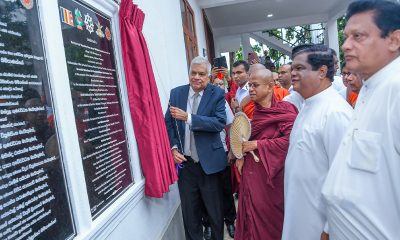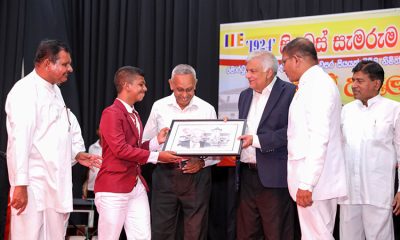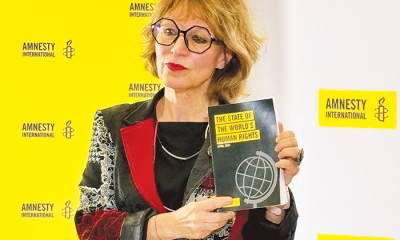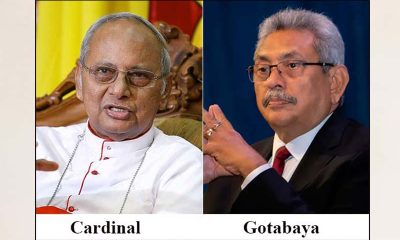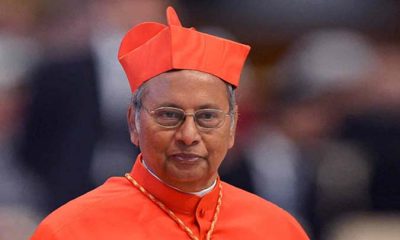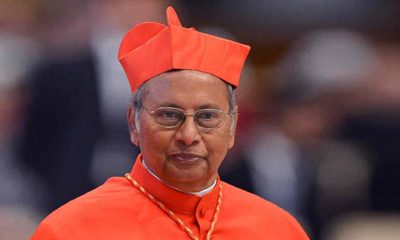Features
Psychological links with Buddhism
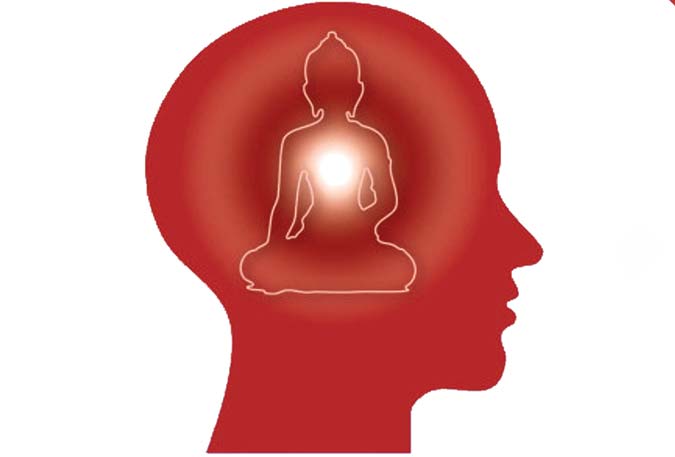
By Dr. Justice Chandradasa Nanayakkara
Psychology is a broad field that encompasses the scientific study of the human mind, and its processes, such as thought, behaviour, development, personality, emotion, motivation, and more. Psychology is derived from many other fields such as philosophy religion, education sociology, and other sciences. Psychology seeks to unravel the mysteries of the mind and enhance the mental well-being of people.
From time immemorial, the “mind” has been a controversial subject among philosophers, psychologists, and thinkers the world over. The true nature and workings of the human mind continue to resist comprehensive understanding despite years of research and many areas of the mind and its true nature remain unexplored and unsolved to this day. The force of the human mind is the most potent of all forces. It predominates all other forces. (Piyadassi Thera). It can be harnessed for one’s benefit or destruction, no one has comprehended the intricacies of the human mind as comprehensively as the Buddha.
It is significant, more than any other religion, that the teachings of the Buddha consisted of an exhaustive analysis of the complex and intricate workings of the human mind. In Buddhism, the human mind together with thoughts and volitions plays an important role in all aspects of human life. The fundamental teachings of buddhism help us to understand our mind and its true nature and psychological ramifications.
Buddhist teaching contains an extensive discourse on the nature of the human mind. What the Buddha preached for forty-five years during his lifetime and all his cardinal teachings whether it is about the Five Precepts, the Four Noble Truths, the Twelve Links of Dependent Origination, the Noble Eightfold Path, and the Four Sublime States invariably involve the human mind.
For these reasons, Buddhism can be considered the most psychological of spiritual traditions. Buddha was one of the greatest psychotherapists the world has ever produced. He was a unique psychotherapist who delved deeply into the intricacies of the human mind. His therapeutic methods helped millions of people who go through immense physical and mental suffering. Buddha realized it only by comprehending the workings of the mind that a person overcomes many problems human beings face.
An eminent British psychiatrist, Dr. Graham Howe has remarked “To read a little Buddhism is to realize that Buddhists knew. 2500 years ago. far more about modern problems of psychology than they have been given credit for. They studied these problems long ago and found the answers also. We are now rediscovering the ancient wisdom of the East”.
Buddhist teachings on the mind are multifaceted and exhaustive. Many regard buddhism primarily as philosophy, religion, code of ethics, and way of life, but it is also a form of psychology that is consistent with the scientific method that emphasizes introspective observation. Philosopher Alan Watts once wrote, “If we look deeply into such ways of life as Buddhism, we do not find either philosophy or religion as these are understood in the West, we find something more nearly resembling Psychotherapy”.
Buddhism can be regarded as a completely developed system of psychology as it examines and analyses the workings of the mind and the behavior of people at a profound level. Just as Western psychology, it includes analysis and functioning of the human mind, emotion, cognition, behavior, and motivation along with therapeutic practices.
However, in contrast to the Western psychotherapeutic practice that focuses mainly on the diagnosis and treatment of mental disorders, Buddhist clinical psychology focuses on cultivating wholesome states of mind by identifying and treating psychological and other emotional problems. In other words, Buddhism aims at the total integration and transformation of the personality. For these reasons, the psychological aspects of Buddhism can be considered more curative than analytic.
Buddhism is fundamentally concerned with identifying the inner causes of human suffering, the possibility of freedom from suffering, and the means to achieve it.
According to Buddhism, life is always fraught with suffering people suffer untold agony and hardship in their lives. There is so much misery all around us. We constantly hear incidents of suicides, mental sicknesses, and other diseases plucking the lives of many young and vibrant people. Old age, sickness, decay, and death constantly snuff the life out of many people in their prime lives.
People experience suffering in various forms. Just as one can suffer from physical disease, one could also suffer from an unhealthy mindset as the mind and the body are interdependent. The health of the mind influences the health of the body and vice versa.
According to Buddhism, hankering after things that are impermanent, devoid of reality, and subject to decay not recognising the all-pervading nature of impermanence brings about unhappiness and suffering. The reality of continuous change which is one of the characteristics of human existence should be always uppermost in the minds of the people. It is known as annitta (impermanence) in buddhism. Impermanence refers to the uncertain and temporary nature of what people regard as reality.
Many people often act on the basis that many aspects of their lives such as relationships, jobs, income, and other material possessions remain the same. Expecting these temporary circumstances to remain permanent intensifies their suffering, pain, grief, and disappointment when they do occur. An enlightened mind perceives both the impermanence of the phenomenal world and the reality of continuous change. Buddhists are expected to examine themselves with a cultivated mind so that they see the true nature of existence.
Buddha placed great emphasis on the mind and attributed all our problems to the deluded mind. It is the deluded mind of attachment, aversion, and ignorance that leads to mental and physical suffering. Buddhism provides an ideal state of mental well-being that results from disabusing the mind of those afflictive unwholesome tendencies.
As a nontheistic religion, buddhism does not believe in a supernatural God and denies any efficacy of prayers for relief but admonishes its adherents to look for nothing but their efforts for salvation. Buddha’s primary concern was to enlighten people on the most important question of sorrow, its origin, its cessation, and the path leading to its cessation.
The answers to these questions constitute the four noble truths. They are (a) Life is full of suffering (Dukkha), (b) There is a cause for this suffering (Dukkha samaya),(c) It is possible to stop suffering(Dukkha nirodha), (d) There is a way to extinguish suffering. (Dukkha nirodha marga).
Buddhism explains everything in nature as the manifestation of the human mind. For Buddhism, the mind is everything. What you think you become. All that we are is the result of what we thought. It is founded on our thoughts, it is made up of our thoughts. If one speaks or acts with pure thought, happiness follows one, like a shadow that never leaves”. (Dhamma pada) Buddha identified the mind as the main root cause of human suffering and other problems, as the power of our mind can influence our physical and emotional state.
In Buddhism, the importance of the human mind is summed up in the following stanza. “Sabbapassa akaranam, kusalassa upasampada, sacittapariyodapanam, etam Buddhana sasanam” which means avoidance of evil, cultivation of wholesome deeds, and controlling of one’s mind.
If a person’s mind is pure then his thoughts and actions will be pure. When the mind is impure the person is impure. It is the mind that creates human suffering. The mind is continually seeking fame, fortune, power, and sensual pleasure. It is constantly calculating and discriminating. The mind governs everything.
Day and night, in our sleeping and our wakefulness, our mind runs wild in a turmoil of thoughts, emotions, desires, worries, and hatred. Mind is constantly attached to external surroundings tirelessly seeking fame, fortune, power, and pleasure, and constantly calculating and discriminating (John Walters). The mind is like a wild deer chasing after sensory pleasure all the time. Mind is as expansive as limitless space. In buddhism, the root cause of suffering and other problems have been attributed to the mind. It is the mind that dictates a person’s behavior. Many human problems are related to the deluded mind. Buddhists are expected to maintain a balanced and peaceful mind.
Today, there is a lack of awareness of the nature of the phenomenal world that is caused by ignorance. Ignorance in turn causes the attachment, craving, and clinging that lead to suffering. Nirvana is a state of mind free from suffering.
When people have somatic illnesses, ample pharmaceuticals are available to treat them, medicine can cure symptoms of illnesses but not the real ailment, as many illnesses originate from the mind.
Buddhism has made a great contribution to modern psychology. Since the mid-20th century, Buddhist teachings have attracted the attention of modern psychologists and scientists who have absorbed considerable wisdom from Eastern cultures, especially Buddhist philosophy and practices. Its teachings on the mind and practices have been of great interest to neuroscientists and psychologists, who look for solutions to people’s suffering.
Buddhist psychology assumes great significance day by day as people experience high levels of psychological and physical problems in their lives. People turn to Buddhist psychology when they experience trouble and tribulations in life.
Buddhist psychotherapy has been widely used to help people deal with a variety of health conditions including mood and personality disorders. Buddhist teachings have been assimilated into Western mental health treatments as they help apply practices that help to overcome unhealthy unwholesome thinking. The transformative power of mindfulness and meditation techniques has been of immense help to people to train their minds to handle life’s challenges and feel more at peace.
Dr, Herbert Benson a Harvard-trained cardiologist determined that the power of mind over the human body is so great that the monks in meditative states had remarkable control over their body temperature and oxygen intake, and they could use their body heat to dry wet towels wrapped around them, in conditions where most people shiver uncontrollably.
It is believed that people who meditate regularly enjoy lower stress levels, increased well-being, and even were able to reduce their blood pressure and resting heart rate. Meditation has also helped millions of people ease chronic pain, anxiety, and stress, boost mood and immunity, and resolve many other problems.
Features
The heart-friendly health minister

by Dr Gotabhya Ranasinghe
Senior Consultant Cardiologist
National Hospital Sri Lanka
When we sought a meeting with Hon Dr. Ramesh Pathirana, Minister of Health, he graciously cleared his busy schedule to accommodate us. Renowned for his attentive listening and deep understanding, Minister Pathirana is dedicated to advancing the health sector. His openness and transparency exemplify the qualities of an exemplary politician and minister.
Dr. Palitha Mahipala, the current Health Secretary, demonstrates both commendable enthusiasm and unwavering support. This combination of attributes makes him a highly compatible colleague for the esteemed Minister of Health.
Our discussion centered on a project that has been in the works for the past 30 years, one that no other minister had managed to advance.
Minister Pathirana, however, recognized the project’s significance and its potential to revolutionize care for heart patients.
The project involves the construction of a state-of-the-art facility at the premises of the National Hospital Colombo. The project’s location within the premises of the National Hospital underscores its importance and relevance to the healthcare infrastructure of the nation.
This facility will include a cardiology building and a tertiary care center, equipped with the latest technology to handle and treat all types of heart-related conditions and surgeries.
Securing funding was a major milestone for this initiative. Minister Pathirana successfully obtained approval for a $40 billion loan from the Asian Development Bank. With the funding in place, the foundation stone is scheduled to be laid in September this year, and construction will begin in January 2025.
This project guarantees a consistent and uninterrupted supply of stents and related medications for heart patients. As a result, patients will have timely access to essential medical supplies during their treatment and recovery. By securing these critical resources, the project aims to enhance patient outcomes, minimize treatment delays, and maintain the highest standards of cardiac care.
Upon its fruition, this monumental building will serve as a beacon of hope and healing, symbolizing the unwavering dedication to improving patient outcomes and fostering a healthier society.We anticipate a future marked by significant progress and positive outcomes in Sri Lanka’s cardiovascular treatment landscape within the foreseeable timeframe.
Features
A LOVING TRIBUTE TO JESUIT FR. ALOYSIUS PIERIS ON HIS 90th BIRTHDAY

by Fr. Emmanuel Fernando, OMI
Jesuit Fr. Aloysius Pieris (affectionately called Fr. Aloy) celebrated his 90th birthday on April 9, 2024 and I, as the editor of our Oblate Journal, THE MISSIONARY OBLATE had gone to press by that time. Immediately I decided to publish an article, appreciating the untiring selfless services he continues to offer for inter-Faith dialogue, the renewal of the Catholic Church, his concern for the poor and the suffering Sri Lankan masses and to me, the present writer.
It was in 1988, when I was appointed Director of the Oblate Scholastics at Ampitiya by the then Oblate Provincial Fr. Anselm Silva, that I came to know Fr. Aloy more closely. Knowing well his expertise in matters spiritual, theological, Indological and pastoral, and with the collaborative spirit of my companion-formators, our Oblate Scholastics were sent to Tulana, the Research and Encounter Centre, Kelaniya, of which he is the Founder-Director, for ‘exposure-programmes’ on matters spiritual, biblical, theological and pastoral. Some of these dimensions according to my view and that of my companion-formators, were not available at the National Seminary, Ampitiya.
Ever since that time, our Oblate formators/ accompaniers at the Oblate Scholasticate, Ampitiya , have continued to send our Oblate Scholastics to Tulana Centre for deepening their insights and convictions regarding matters needed to serve the people in today’s context. Fr. Aloy also had tried very enthusiastically with the Oblate team headed by Frs. Oswald Firth and Clement Waidyasekara to begin a Theologate, directed by the Religious Congregations in Sri Lanka, for the contextual formation/ accompaniment of their members. It should very well be a desired goal of the Leaders / Provincials of the Religious Congregations.
Besides being a formator/accompanier at the Oblate Scholasticate, I was entrusted also with the task of editing and publishing our Oblate journal, ‘The Missionary Oblate’. To maintain the quality of the journal I continue to depend on Fr. Aloy for his thought-provoking and stimulating articles on Biblical Spirituality, Biblical Theology and Ecclesiology. I am very grateful to him for his generous assistance. Of late, his writings on renewal of the Church, initiated by Pope St. John XX111 and continued by Pope Francis through the Synodal path, published in our Oblate journal, enable our readers to focus their attention also on the needed renewal in the Catholic Church in Sri Lanka. Fr. Aloy appreciated very much the Synodal path adopted by the Jesuit Pope Francis for the renewal of the Church, rooted very much on prayerful discernment. In my Religious and presbyteral life, Fr.Aloy continues to be my spiritual animator / guide and ongoing formator / acccompanier.
Fr. Aloysius Pieris, BA Hons (Lond), LPh (SHC, India), STL (PFT, Naples), PhD (SLU/VC), ThD (Tilburg), D.Ltt (KU), has been one of the eminent Asian theologians well recognized internationally and one who has lectured and held visiting chairs in many universities both in the West and in the East. Many members of Religious Congregations from Asian countries have benefited from his lectures and guidance in the East Asian Pastoral Institute (EAPI) in Manila, Philippines. He had been a Theologian consulted by the Federation of Asian Bishops’ Conferences for many years. During his professorship at the Gregorian University in Rome, he was called to be a member of a special group of advisers on other religions consulted by Pope Paul VI.
Fr. Aloy is the author of more than 30 books and well over 500 Research Papers. Some of his books and articles have been translated and published in several countries. Among those books, one can find the following: 1) The Genesis of an Asian Theology of Liberation (An Autobiographical Excursus on the Art of Theologising in Asia, 2) An Asian Theology of Liberation, 3) Providential Timeliness of Vatican 11 (a long-overdue halt to a scandalous millennium, 4) Give Vatican 11 a chance, 5) Leadership in the Church, 6) Relishing our faith in working for justice (Themes for study and discussion), 7) A Message meant mainly, not exclusively for Jesuits (Background information necessary for helping Francis renew the Church), 8) Lent in Lanka (Reflections and Resolutions, 9) Love meets wisdom (A Christian Experience of Buddhism, 10) Fire and Water 11) God’s Reign for God’s poor, 12) Our Unhiddden Agenda (How we Jesuits work, pray and form our men). He is also the Editor of two journals, Vagdevi, Journal of Religious Reflection and Dialogue, New Series.
Fr. Aloy has a BA in Pali and Sanskrit from the University of London and a Ph.D in Buddhist Philosophy from the University of Sri Lankan, Vidyodaya Campus. On Nov. 23, 2019, he was awarded the prestigious honorary Doctorate of Literature (D.Litt) by the Chancellor of the University of Kelaniya, the Most Venerable Welamitiyawe Dharmakirthi Sri Kusala Dhamma Thera.
Fr. Aloy continues to be a promoter of Gospel values and virtues. Justice as a constitutive dimension of love and social concern for the downtrodden masses are very much noted in his life and work. He had very much appreciated the commitment of the late Fr. Joseph (Joe) Fernando, the National Director of the Social and Economic Centre (SEDEC) for the poor.
In Sri Lanka, a few religious Congregations – the Good Shepherd Sisters, the Christian Brothers, the Marist Brothers and the Oblates – have invited him to animate their members especially during their Provincial Congresses, Chapters and International Conferences. The mainline Christian Churches also have sought his advice and followed his seminars. I, for one, regret very much, that the Sri Lankan authorities of the Catholic Church –today’s Hierarchy—- have not sought Fr.
Aloy’s expertise for the renewal of the Catholic Church in Sri Lanka and thus have not benefited from the immense store of wisdom and insight that he can offer to our local Church while the Sri Lankan bishops who governed the Catholic church in the immediate aftermath of the Second Vatican Council (Edmund Fernando OMI, Anthony de Saram, Leo Nanayakkara OSB, Frank Marcus Fernando, Paul Perera,) visited him and consulted him on many matters. Among the Tamil Bishops, Bishop Rayappu Joseph was keeping close contact with him and Bishop J. Deogupillai hosted him and his team visiting him after the horrible Black July massacre of Tamils.
Features
A fairy tale, success or debacle

Sri Lanka-Singapore Free Trade Agreement
By Gomi Senadhira
senadhiragomi@gmail.com
“You might tell fairy tales, but the progress of a country cannot be achieved through such narratives. A country cannot be developed by making false promises. The country moved backward because of the electoral promises made by political parties throughout time. We have witnessed that the ultimate result of this is the country becoming bankrupt. Unfortunately, many segments of the population have not come to realize this yet.” – President Ranil Wickremesinghe, 2024 Budget speech
Any Sri Lankan would agree with the above words of President Wickremesinghe on the false promises our politicians and officials make and the fairy tales they narrate which bankrupted this country. So, to understand this, let’s look at one such fairy tale with lots of false promises; Ranil Wickremesinghe’s greatest achievement in the area of international trade and investment promotion during the Yahapalana period, Sri Lanka-Singapore Free Trade Agreement (SLSFTA).
It is appropriate and timely to do it now as Finance Minister Wickremesinghe has just presented to parliament a bill on the National Policy on Economic Transformation which includes the establishment of an Office for International Trade and the Sri Lanka Institute of Economics and International Trade.
Was SLSFTA a “Cleverly negotiated Free Trade Agreement” as stated by the (former) Minister of Development Strategies and International Trade Malik Samarawickrama during the Parliamentary Debate on the SLSFTA in July 2018, or a colossal blunder covered up with lies, false promises, and fairy tales? After SLSFTA was signed there were a number of fairy tales published on this agreement by the Ministry of Development Strategies and International, Institute of Policy Studies, and others.
However, for this article, I would like to limit my comments to the speech by Minister Samarawickrama during the Parliamentary Debate, and the two most important areas in the agreement which were covered up with lies, fairy tales, and false promises, namely: revenue loss for Sri Lanka and Investment from Singapore. On the other important area, “Waste products dumping” I do not want to comment here as I have written extensively on the issue.
1. The revenue loss
During the Parliamentary Debate in July 2018, Minister Samarawickrama stated “…. let me reiterate that this FTA with Singapore has been very cleverly negotiated by us…. The liberalisation programme under this FTA has been carefully designed to have the least impact on domestic industry and revenue collection. We have included all revenue sensitive items in the negative list of items which will not be subject to removal of tariff. Therefore, 97.8% revenue from Customs duty is protected. Our tariff liberalisation will take place over a period of 12-15 years! In fact, the revenue earned through tariffs on goods imported from Singapore last year was Rs. 35 billion.
The revenue loss for over the next 15 years due to the FTA is only Rs. 733 million– which when annualised, on average, is just Rs. 51 million. That is just 0.14% per year! So anyone who claims the Singapore FTA causes revenue loss to the Government cannot do basic arithmetic! Mr. Speaker, in conclusion, I call on my fellow members of this House – don’t mislead the public with baseless criticism that is not grounded in facts. Don’t look at petty politics and use these issues for your own political survival.”
I was surprised to read the minister’s speech because an article published in January 2018 in “The Straits Times“, based on information released by the Singaporean Negotiators stated, “…. With the FTA, tariff savings for Singapore exports are estimated to hit $10 million annually“.
As the annual tariff savings (that is the revenue loss for Sri Lanka) calculated by the Singaporean Negotiators, Singaporean $ 10 million (Sri Lankan rupees 1,200 million in 2018) was way above the rupees’ 733 million revenue loss for 15 years estimated by the Sri Lankan negotiators, it was clear to any observer that one of the parties to the agreement had not done the basic arithmetic!
Six years later, according to a report published by “The Morning” newspaper, speaking at the Committee on Public Finance (COPF) on 7th May 2024, Mr Samarawickrama’s chief trade negotiator K.J. Weerasinghehad had admitted “…. that forecasted revenue loss for the Government of Sri Lanka through the Singapore FTA is Rs. 450 million in 2023 and Rs. 1.3 billion in 2024.”
If these numbers are correct, as tariff liberalisation under the SLSFTA has just started, we will pass Rs 2 billion very soon. Then, the question is how Sri Lanka’s trade negotiators made such a colossal blunder. Didn’t they do their basic arithmetic? If they didn’t know how to do basic arithmetic they should have at least done their basic readings. For example, the headline of the article published in The Straits Times in January 2018 was “Singapore, Sri Lanka sign FTA, annual savings of $10m expected”.
Anyway, as Sri Lanka’s chief negotiator reiterated at the COPF meeting that “…. since 99% of the tariffs in Singapore have zero rates of duty, Sri Lanka has agreed on 80% tariff liberalisation over a period of 15 years while expecting Singapore investments to address the imbalance in trade,” let’s turn towards investment.
Investment from Singapore
In July 2018, speaking during the Parliamentary Debate on the FTA this is what Minister Malik Samarawickrama stated on investment from Singapore, “Already, thanks to this FTA, in just the past two-and-a-half months since the agreement came into effect we have received a proposal from Singapore for investment amounting to $ 14.8 billion in an oil refinery for export of petroleum products. In addition, we have proposals for a steel manufacturing plant for exports ($ 1 billion investment), flour milling plant ($ 50 million), sugar refinery ($ 200 million). This adds up to more than $ 16.05 billion in the pipeline on these projects alone.
And all of these projects will create thousands of more jobs for our people. In principle approval has already been granted by the BOI and the investors are awaiting the release of land the environmental approvals to commence the project.
I request the Opposition and those with vested interests to change their narrow-minded thinking and join us to develop our country. We must always look at what is best for the whole community, not just the few who may oppose. We owe it to our people to courageously take decisions that will change their lives for the better.”
According to the media report I quoted earlier, speaking at the Committee on Public Finance (COPF) Chief Negotiator Weerasinghe has admitted that Sri Lanka was not happy with overall Singapore investments that have come in the past few years in return for the trade liberalisation under the Singapore-Sri Lanka Free Trade Agreement. He has added that between 2021 and 2023 the total investment from Singapore had been around $162 million!
What happened to those projects worth $16 billion negotiated, thanks to the SLSFTA, in just the two-and-a-half months after the agreement came into effect and approved by the BOI? I do not know about the steel manufacturing plant for exports ($ 1 billion investment), flour milling plant ($ 50 million) and sugar refinery ($ 200 million).
However, story of the multibillion-dollar investment in the Petroleum Refinery unfolded in a manner that would qualify it as the best fairy tale with false promises presented by our politicians and the officials, prior to 2019 elections.
Though many Sri Lankans got to know, through the media which repeatedly highlighted a plethora of issues surrounding the project and the questionable credentials of the Singaporean investor, the construction work on the Mirrijiwela Oil Refinery along with the cement factory began on the24th of March 2019 with a bang and Minister Ranil Wickremesinghe and his ministers along with the foreign and local dignitaries laid the foundation stones.
That was few months before the 2019 Presidential elections. Inaugurating the construction work Prime Minister Ranil Wickremesinghe said the projects will create thousands of job opportunities in the area and surrounding districts.
The oil refinery, which was to be built over 200 acres of land, with the capacity to refine 200,000 barrels of crude oil per day, was to generate US$7 billion of exports and create 1,500 direct and 3,000 indirect jobs. The construction of the refinery was to be completed in 44 months. Four years later, in August 2023 the Cabinet of Ministers approved the proposal presented by President Ranil Wickremesinghe to cancel the agreement with the investors of the refinery as the project has not been implemented! Can they explain to the country how much money was wasted to produce that fairy tale?
It is obvious that the President, ministers, and officials had made huge blunders and had deliberately misled the public and the parliament on the revenue loss and potential investment from SLSFTA with fairy tales and false promises.
As the president himself said, a country cannot be developed by making false promises or with fairy tales and these false promises and fairy tales had bankrupted the country. “Unfortunately, many segments of the population have not come to realize this yet”.
(The writer, a specialist and an activist on trade and development issues . )


